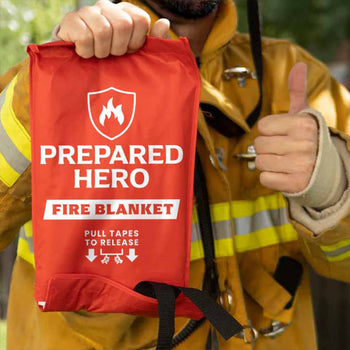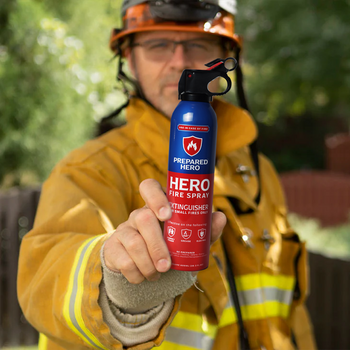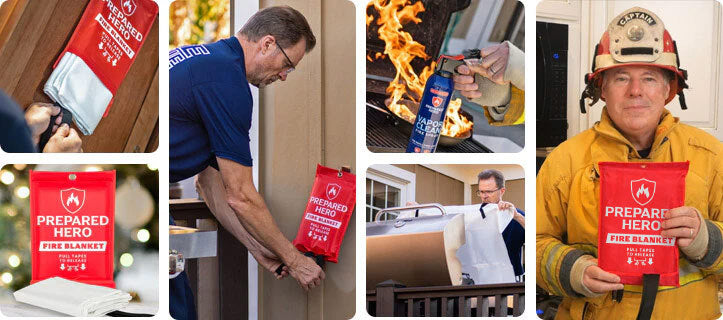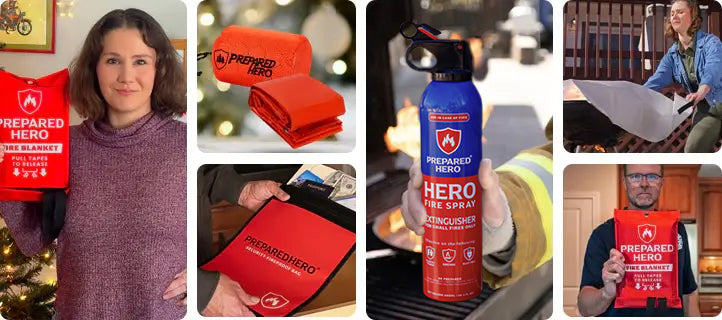Where you put your smoke detectors matters just as much as installing them. Proper placement makes sure they can detect...
According to the National Fire Protection Association (NFPA), there are about 1.5 million fires in the USA per year. These fires cause 3,790 deaths and 13,250 injuries.
A fire prevention plan saves you from these sad statistics. But which elements do you think need to go in a fire prevention plan? Are there any guidelines you need to follow?
In this post, we’ll answer the most frequently asked questions about fire prevention plans. We’ll also talk about how you can make a fire prevention plan tailored to your needs and environment.
What Is a Fire Prevention Plan?

A fire prevention plan is a detailed document that explains measures and identifies potential fire hazards to prevent fire. This plan is used at homes, offices, hospitals, factories, schools, and communities to enhance fire safety and preparedness. Its primary purpose is to help homeowners and business owners understand how to prevent fires and how to respond if one occurs.
There are five main types of fire prevention plans: residential, commercial, industrial, institutional, and community.
Residential
Residential fire prevention plans are designed to protect homes from the devastating effects of fire. These plans focus on identifying fire hazards at home, such as vegetable oil, overloaded outlets, and faulty wiring. They also include fire safety measures like installing smoke alarms, fire drills at home, knowing when to evacuate the house, and having fire sprays or fire extinguishers.
Commercial
Commercial fire prevention plans are for offices. Their purpose is to keep employees and customers safe. They focus on identifying fire risks and hazards in the workplace, installing fire sprinklers, marking emergency exits, and training employees on fire safety and evacuation protocols. Depending on the nature of the business, some commercial spaces need additional fire safety equipment. For instance, restaurants should have kitchen fire suppression systems because they’re prone to kitchen fires.
Industrial
Industrial fire prevention plans are designed for industrial settings prone to severe fires because of heavy machinery and flammable materials. Like the other types of fire prevention plans, they prioritize identifying fire hazards, implementing proper storage practices, and practicing electrical safety. Based on this assessment, clear policies are made to educate workers about fire safety and evacuation procedures.
Institutional
Institutional fire prevention plans are made for large organizations and facilities like hospitals, universities, and government agencies. These plans need more thorough fire assessments because of the size of the building. For instance, a house needs a less thorough assessment than a tertiary hospital.
An institutional fire prevention plan includes analyzing the building’s layout, who occupies it, and how many people get in daily. It also includes outlining the roles and responsibilities of the staff if a fire breaks out. Plus, regular fire safety training and drills are a must due to the plan's scope.
Community
Community fire prevention plans focus on the broader community. They involve different stakeholders, including residents, homeowners’ associations, and local fire departments.
These fire prevention plans focus on educating residents about fire safety, prevention, and response. They also include access to fire safety resources, such as workshops and support from local fire departments. Lastly, they identify and prevent community fires (e.g., wildfires and urban fires), which are way more dangerous than regular fires.
Why Is a Fire Prevention Plan Important?

Fire prevention plans are important because they save lives, protect properties from damages, comply with regulations, avoid financial ruin, and promote a culture of fire safety.
A Fire Prevention Plan Save Lives
The purpose of a fire prevention plan is to protect lives. Identifying fire hazards and implementing safety measures decreases the risk of injuries and deaths.
Plus, a proper fire prevention plan gives people peace of mind. When they know fire safety measures are in place, they are more likely to feel confident when a fire occurs. As a result, panic won’t cloud their judgment, and they can respond quickly.
A Fire Prevention Plan Protects Properties
Fires can burn houses, machines, buildings, and other valuable assets. A fire prevention plan helps mitigate these by promoting fire safety tools, safe storage practices, and proper handling of flammable materials. By doing these, homeowners and entrepreneurs reduce the likelihood of a fire breaking out.
In addition, an effective fire prevention plan helps minimize fire damage. For instance, using a fire blanket to put out a grease fire in the kitchen can prevent it from spreading and burning other areas of your house.
A Fire Prevention Plan Complies With Regulations
States have specific fire codes and regulations. Following them helps you avoid penalties or legal consequences.
In particular, the Occupational Safety and Health Administration (OSHA) requires fire prevention plans. The regulation orders employers to make and implement fire prevention plans that include the actions they should take to ensure their employees’ safety. It should also highlight fire safety procedures such as fire safety training, evacuation, fire drills, and coordination with the fire department.
Having a proper fire prevention plan allows you to comply with such regulations and avoid lawsuits that might harm your business and employees.
A Fire Prevention Plan Avoids Financial Ruin
A fire prevention plan also avoids financial ruin. While fire insurance helps, it’s better if you don’t have to use it.
In particular, a fire prevention plan avoids the financial burden associated with fire damage, such as rebuilding, repairs, insurance claims, and employee downtime.
A Fire Prevention Plan Promotes a Culture of Fire Safety
Having a fire prevention plan educates people about the dangers of fire. This encourages residents, businesses, institutions, and communities to be more careful and learn how to put out fires. As a result, they create a safer environment for everyone, reducing the overall risk of fire-related accidents.
A fire prevention plan also opens discussions about fire safety, helping everyone improve current procedures. It also builds better dynamics since everyone works together to achieve common goals.
Which Elements Do You Think Need to Go in a Fire Prevention Plan?

According to the Occupational Safety and Health Administration (OSHA), a fire prevention plan should include the following elements at a minimum:
Fire Hazards
Fire hazards are the first element of a fire prevention plan. All fire hazards that could start or spread a fire should be listed down and described. These include paper, boxes, curtains, machines, heaters, flammable liquids, and cooking appliances. Go here for a full list of fire hazards at home.
Fire Protection Equipment
Now that you’ve covered the fire hazards, it’s time to include the next element: fire protection equipment. They should match the fire hazards in your fire prevention plan. Common fire protection equipment include smoke detectors, fire sprinklers, fire extinguishers, fire sprays, and extra large fire blankets. Plus, each major fire hazard should have a fire prevention tool that can control it.
Proper Handling and Storage
The next element that should be included in a fire prevention plan is proper handling and storage of hazardous materials. These include acetaldehyde, bromine, and ammonia.
Potential Ignition Sources
A fire prevention plan should also include potential ignition sources and how to control them. Common ignition sources include open flames, hot surface, and faulty wiring. Control measures for potential ignition sources include regular equipment maintenance, hot work permits, and proper ventilation.
Procedures for Flammable and Combustible Waste Materials
Flammable and combustible materials are more dangerous than regular ones because they easily ignite and burn. In general, combustible materials have a flashpoint at or above 100 °F or 37.8 °C, while flammable ones have a flashpoint at or above 100 °F or 37.8 °C.
Hence, a proper fire prevention plan should include procedures to control the accumulation of flammable and combustible waste materials. These include having designated disposal areas, using fire-resistant containers, and doing regular cleanups.
Maintenance of Safeguards
Heat-producing equipment should have safeguards that prevent them from accidentally igniting combustible materials. These include heat shields, automatic shut-off switches for overheating, and thermostats. The said safeguards should be regularly maintained to make sure they work, and your fire prevention plan should outline how and when to perform maintenance.
Employees for Maintaining Equipment
Another element a fire prevention plan should include is the list of employees responsible for maintaining equipment to prevent or control ignition and fire sources. The list should have the names and job titles of the said employees.
Employees for Fuel Source Control
The last element of a fire prevention plan is the list of employees responsible for controlling fuel sources. These are classified as hazards by the OSHA, so employees should be assigned to monitor and control them if a fire breaks out. The list should have the names and job titles of the said employees.
How to Make a Fire Prevention Plan

Creating a fire prevention plan saves lives and prevents property damage. It helps you spot potential fire hazards, outlines how to protect against them, and explains the steps for managing fire risks. Here’s how to make a fire prevention plan:
1. Identify fire hazards.
Scan your surroundings for potential fire hazards. Look for flammable materials, heat sources, overloaded outlets, and anything that can start a fire. Then, create a list with the fire hazards, their locations, sizes, and nature. Doing this lets you know the hazards present in your house, workplace, or community.
2. Identify the fire protection tools needed.
Next, scan your surroundings for fire protection tools. Do you have smoke alarms on every floor of your house? Are their fire sprays or extinguishers near the machines? Is your fire alarm working?
Make sure each tool works for specific firs risks, and list down their locations for easy access during an emergency. For instance, a fire blanket located in your kitchen is best used on grease fires.
3. Create handling and storage procedures.
Write clear procedures for handling and storing hazardous materials. Use certified fire-resistant containers for flammable substances and put them far from ignition sources. Then, make sure everyone becomes familiar with the said procedures.
4. Identify ignition sources.
List all potential ignition sources in the workplace, such as open flames, hot surfaces, and electrical equipment. Then, create control measures for each source, including routine inspection and implementation of hot work permits.
5. Create waste management protocols.
Establish procedures for managing flammable and combustible waste materials. Designate specific disposal areas equipped with fire-resistant containers. Schedule regular cleanups to prevent accumulation of hazardous waste and ensure employees understand the importance of following these procedures.
6. Make safeguard protocols for heating equipment.
If you have a heating system at home, it’s best to use safeguards like automatic switches. Safeguards are more important in industrial settings with heavy machinery. Employees should also know how to use the safeguards and regular maintenance should be done by professionals if needed.
7. Assign responsibilities and train your employees.
List down the names and job titles of employees responsible for maintaining equipment and controlling fuel sources. Include their names and job titles. Clearly define each person's responsibilities to ensure accountability and preparedness. If you’re making a fire prevention plan for your house, do the same thing but with your family members.
Conduct regular training sessions on fire hazards, fire safety measures, and evacuation procedures. Everyone should understand the fire prevention plan, know how to use fire protection tools, and be familiar with fire exit routes.
8. Document and distribute the fire prevention plan.
Document the fire prevention plan and make sure everyone can access it. Distribute copies and clearly explain the plan during meetings or training sessions. If you need to update the fire prevention plan, make sure everyone’s informed.
Conclusion
An effective fire prevention plan includes the following elements: fire hazards, fire protection equipment, proper handling and storage procedures, potential ignition sources, combustible waste management protocols, maintenance of safeguards, and designated employee responsibilities for equipment and fuel source control. By including these elements in your fire prevention plan, you protect what matters the most: people’s lives. Stay prepared, hero!


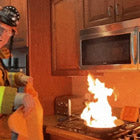 Fire
Fire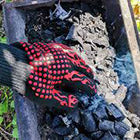 Safety
Safety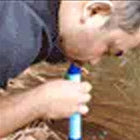 Survival
Survival Protection
Protection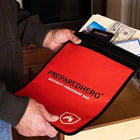 New
New
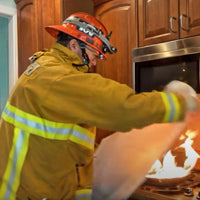 Fire
Fire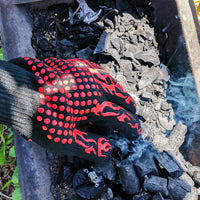 Safety
Safety Survival
Survival Protection
Protection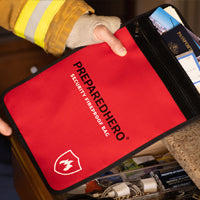 New
New
